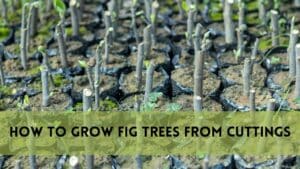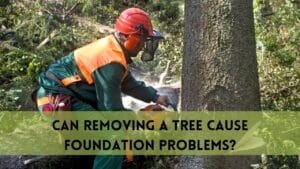The beauty and shade of the surrounding trees frequently add to a home’s sense of tranquility. However, when storms rage, the very trees that bring comfort and visual appeal can become potential causes of devastation. The question then becomes, Does homeowners insurance cover tree removal after a storms?
In the following investigation, we will explore the complexity of homeowners insurance and its relationship with tree removal after storms. We’ll navigate the complexities of policy terms, coverage limits, deductibles, and the circumstances under which your prized trees may be protected or left to your own resources. Understanding this topic is critical for protecting your house, property, and peace of mind when nature’s fury strikes.
Insurance Cover Tree Removal After Storms
This question is more than a curiosity; it is a practical problem for households all around the world. The answer, however, is not a one-size-fits-all solution. Homeowners insurance can provide compensation for tree removal costs incurred in the aftermath of storms, but the degree of that coverage is dependent on many critical variables.
1. Policy Variability:
Homeowners insurance policies do not all follow the same format. Coverage might differ greatly between policies and even between insurance providers. It is critical to study and understand your unique policy to understand what is and is not covered.
2. Covered Structures:
In most cases, homeowners insurance will cover the removal of fallen trees or branches that have caused damage to covered structures on your property. Your home, garage, fence, or shed are examples of buildings. The insurance coverage ought to pay for the costs of removing the tree and repairing the damaged structures.
3. Coverage Limits:
While tree removal after storms damage may be covered, the amount an insurer will pay for this service is frequently limited. To avoid unexpected out-of-pocket payments, policyholders should be informed of these limitations. If the cost of tree removal exceeds the coverage limit, the homeowner may be held liable for any additional costs.
4. Non-destroyed Structures:
Some plans include tree removal coverage if a fallen tree obstructs access to your property, such as a driveway or walkway, even if no structures are destroyed. These scenarios, however, are subject to certain criteria and limitations that differ by policy.
5. Neighbor’s Property:
If your tree falls on your neighbor’s property but causes no harm and lands in an empty spot in their yard, you are not required to do anything. But, as a nice neighbor, you’d talk about the removal process. The cost of removing a tree varies depending on its size and accessibility, but anticipate spending between $150 and $1500. You may share this expense with your neighbor.
Of course, when it comes to insurance, a lot depends on your coverage and your insurer. An insurance provider may be willing to pay $500–$1,000 to assist with removal, especially if its presence raises other dangers.
6. Preventive Measures:
Insurance companies are more likely to reimburse tree removal costs caused by storms or accidents than by natural wear and tear, sickness, or old age. Homeowners can increase their chances of getting coverage by keeping their trees and taking precautions against storm-related damage.
7. Deductibles:
Most home insurance policies have a deductible, which is the initial sum that the homeowner must pay before insurance coverage kicks in. Understanding your deductible is critical in assessing whether filing a claim for tree removal is cost-effective.
8. Reporting and Documentation:
It is critical to report storm-related tree damage to your insurance company as soon as possible. Clear documentation, such as images and thorough descriptions of the damage, can help the claims process go more smoothly.
9. Regular Maintenance:
Insurance companies encourage proactive tree maintenance, such as pruning overhanging branches and resolving potential tree risks. It displays responsible homeowner conduct and may have an impact on insurance coverage.
10. Policy Review:
Because insurance policies can change, homeowners should review their policies on a regular basis and discuss any issues or questions with their insurance agent.
How much does insurance pay for tree removal?
If a tree falls on a covered structure, insurance will pay to remove the tree and repair the structure. It will pay up to the insurance limitations. You should anticipate paying up to $1,000 for tree removal, but no more than $500 per tree. So, if two trees fell on your garage during a violent storm, normal coverage would pay $1,000. However, there is no established norm here, so always ask your insurance provider for information well before you need it.
Does Homeowner’s Insurance Cover Root Damage?
In general, ordinary homeowners insurance does not cover tree root damage because it is considered a gradual issue tied to property care rather than a sudden and unexpected event.
Tree root damage usually develops over time as roots stretch and grow, causing issues such as intruding sewage lines or harming foundations. Because the damage is slow, it is not covered by most homeowners insurance policies.
Homeowners are responsible for maintaining their properties, which includes managing trees and their roots. This role entails doing frequent inspections to detect indicators of root-related concerns and taking preventive measures to address prospective problems.
FAQs
Does homeowners insurance cover tree removal if a fallen tree damages my house?
Yes, most homeowners insurance policies provide coverage for tree removal if a fallen tree or branch damages a covered structure, such as your home, garage, or shed.
Is there a limit to the coverage for tree removal expenses?
Yes, policies often have coverage limits for tree removal. Review your policy to understand the maximum amount your insurer will pay, and be prepared for potential additional expenses if the cost exceeds that limit.
What if a fallen tree doesn’t damage my home but blocks access to my property?
Some policies may cover tree removal in such cases, but coverage is typically subject to limits and conditions.
Will insurance cover tree removal for trees that fall due to old age or disease?
Typically, unforeseen events like storms or accidents are the only ones that qualify for insurance coverage. Tree removal for normal wear and tear or maintenance is typically not covered.
What should I do if a storm damages my trees and property?
Document the damage with photographs and descriptions, report it to your insurance company promptly, and be prepared to work with an adjuster to assess the damage and determine coverage.
Conclusion
In the aftermath of a storm, the main question arises: does homeowner insurance cover tree removal or not? While insurance can provide coverage, it depends on policy terms,deductibles and specific circumstances of storm damage
Understanding one’s insurance policy is critical for homeowners. Knowing your policy limitations, deductible amounts, and reporting procedures can help you navigate the aftermath of a disaster. While insurance might help with some of the financial responsibilities, proactive tree management and storm readiness are still necessary measures for protecting your home and property.





